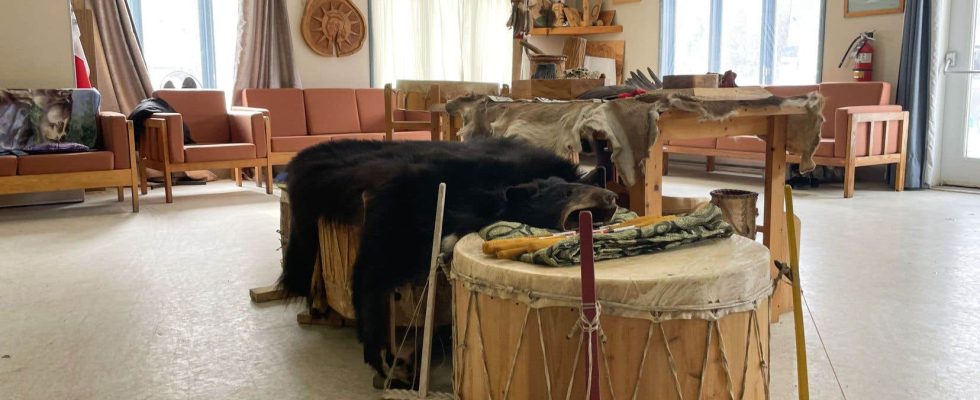Indigenous Healing Lodges, which Correctional Services Canada (CSC) says “provide culturally appropriate services and programs to offenders in an environment that incorporates Indigenous values, traditions and beliefs,” remain underfunded. , deplores the correctional investigator of Canada, Ivan Zinger.
However, these establishments could help reduce the high percentage of indigenous inmates in federal penitentiaries, he adds.
The number of Indigenous prisoners continues to grow, 25 years after the Supreme Court upheld a section of the Criminal Code requiring judges to consider, “particularly with respect to Indigenous offenders, all alternative sanctions that are reasonable in the circumstances.” and which take into account the harm caused to the victims or to the community.”
The overincarceration of Indigenous people has worsened over the years, underlines Mr. Zinger.
Aboriginal people account for 32% of the prison population even though they only make up 5% of the entire adult population. The situation is even more alarming for indigenous women, as they represent half of the population in prisons. “A sad milestone,” notes Mr. Zinger.
Twenty-five years ago, Indigenous offenders made up 17% of the prison population, according to the Canadian Center for Justice Statistics.
Mr. Zinger says there is an urgent need to better fund Indigenous facilities that offer an alternative to conventional prisons. Nearly 30 years after the founding of the first healing lodge for Aboriginal people, there are only 139 places available in the six centers managed by an Aboriginal community. The Correctional Service takes care of 250 other places on its own.
“This is a real problem for this strategy. This is not respectful of the principles of reconciliation, autonomy and self-determination. »
The Waseskun Healing Center, located in Saint-Alphonse-Rodriguez, in Lanaudière, is one of ten healing lodges funded by Correctional Services. It houses indigenous offenders who would normally be locked up in a federal penitentiary.
It is the only subsidized healing lodge located in eastern Manitoba and one of six centers managed by an Indigenous community. Recognized as a success by the federal Ministry of Public Security, it has 22 places reserved for men whose prison sentence exceeds two years.
For some residents, the biggest difference between the center and other correctional facilities is living only among other Aboriginal people. In CSC prisons, inmates receive some psychological help, but little cultural orientation.
“I have a non-Indigenous person who tells me how I’m supposed to feel as an Indigenous person,” says Steven, a Mi’kmaq who is detained in Wasekun. Doesn’t anyone see the irony in that? This person did not follow in my footsteps, he does not know my people. She doesn’t know what I had to go through. »
Correctional Services offers inmates a program called “Native Pathways” led by an Elder. However, Stan Cudek, executive director and founder of the Wasekun center, says the unsafe environment of prisons can keep some people from opening up.
“Here, people can reveal the reasons for their imprisonment and sometimes, they tell their whole lives. You can’t do that in prison. We risk getting killed, he says. They come here and they realize after a while that they are safe. Nobody is going to beat them. »
There is limited data on the fate of these detainees once released. In 2016, a report from the Solicitor General of Canada indicated that 78% of offenders from a healing lodge were more likely to successfully complete their period of supervision in the community compared to 63% of those from a secure institution. minimal traditional.
Despite repeated calls for an increase in the number of healing lodges for Aboriginal people, Mr. Zinger found last year that there were only 53 more places available than 10 years ago.
And there are still no establishments in the territories, Ontario and the Atlantic.
Existing pavilions operate on average at only 51% of their capacity, Mr. Zinger points out, because too few inmates are transferred there.
In his report, Mr. Zinger discovered discrimination in the financing of these pavilions. Those run by an Indigenous community receive only 62 cents for every dollar received by those run by CSC.
A CSC spokesperson, Chris MacMillan, says lodges managed by the federal agency receive more funding because security needs are greater. In addition, the CSC must assume the expenses for care, which is not the case for community lodges.
Mr. Zinger fears that this disparity can be explained by deeper causes.
“For me, it’s discrimination,” he says. CSC must give more control and authority to healing lodges run by an Indigenous community. »
